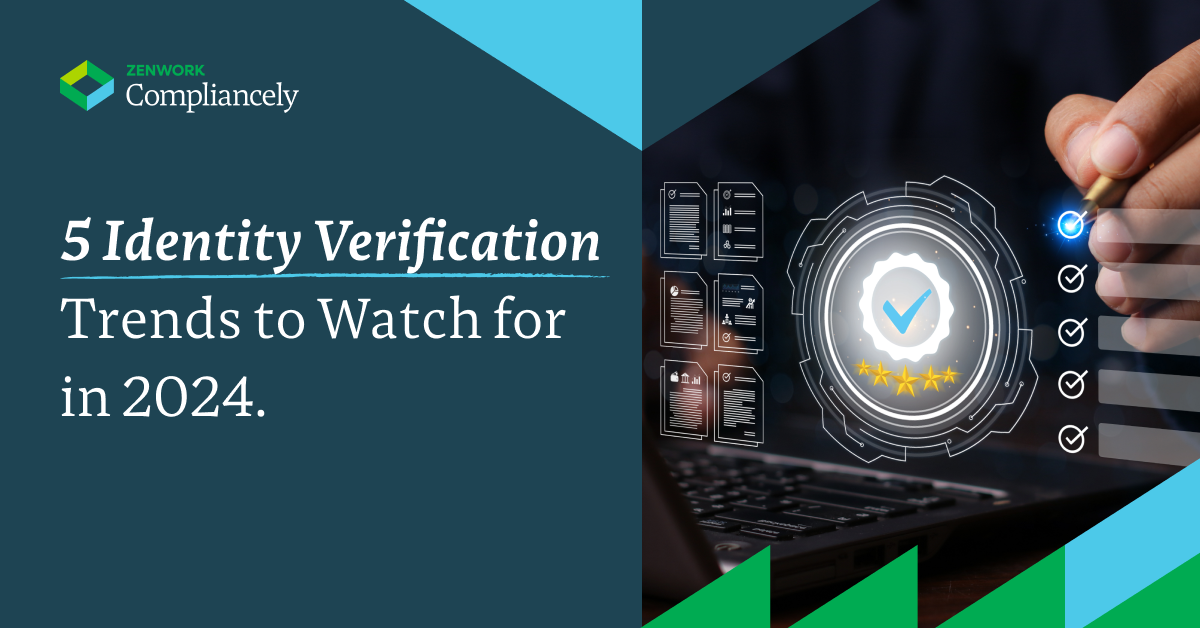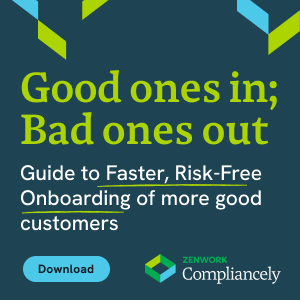
5 Identity Verification Trends to Watch for in 2024
With a future outlook of $43.9 billion by 2032 at 15% CAGR from 2023’s $12 billion, the Identity Verification market is at an inflection point, now more than ever. 2024 is strategically placed at a juncture where businesses are trying to sustain the balance between emerging technologies such as AI, with their own risks of creating new kinds of fraud, and conventional fraud mitigation methods. This exponentially positive outlook for the market is primarily driven by those efforts.
The Federal Trade Commission (FTC) has recently reported that consumers have lost more than US$ 10 billion in various types of identity fraud during 2023. That’s why market players have been buckling up their shoes to fight these identity theft issues. One common thing among successful ones in overcoming these issues is that they all focus on recognizing the upcoming prevalent trends and threats in their market. You can also do the same for your businesses by following the trends that suit you and what you must be prepared for.
Key Trends in 2024 around Identity Verification
1. Growth in Verification Challenges for Businesses
Know Your Business (KYB) requirements have taken center stage in the current regulatory scenario. The KYB checks are traditionally performed manually. A team does all the heavy lifting work of searching and cross-verifying various business-related information which leaves room for errors and inefficiencies. Now, consider the backdrop of the new age of identity threats. Businesses, at the moment stand at high risk from various identity verification challenges.
Like in the past year alone, there has been an increase in the number of high-profile fraud cases. It was particularly associated with government loan programs where small businesses in the States find themselves in the crosshairs of fraudsters. They are easy to impersonate because all the information regarding them is publicly and easily available.
So, there is a need for layered verification processes and streamlining efforts, highlighting the urgency for businesses to protect against identity theft.
That’s why regulatory bodies across globe have introduced new legislations like DAC7 regulation in the European Union (EU) and the INFORM Consumers Act in the United States. The former requires digital platform operators to report information about the sellers who use their platforms starting from January 31, 2024. The other one requires online marketplaces and large third-party sellers to disclose the seller’s information.
2. Generative AI, both a Curse and Boon, depends on which side uses it.
The rise of Generative AI’s Deepfake technology has created a blurry line between real and fake identities. It has made it harder than ever to distinguish and is becoming a significant challenge for customer onboarding and fraud detection. In a recent survey, 87% of fraud and risk professionals reported that their companies extended credit to accounts with synthetic identities, a blend of real stolen data with fictional information.
Fraudsters are leveraging AI to automate and refine phishing attacks and automate scam operations at scale through bot-driven fraud. Also, enhancing social engineering attacks and accelerating fraud-as-a-service concepts. All of this adds a new layer of sophistication to identity fraud.
So, to combat these threats, organizations need a comprehensive action plan for onboarding processes. And it should involve tools like watchlist screening, electronic identification, and data verification. And AI can help in this being a first line of defense against these frauds.
3. Growth of Synthetic Fraud has been evident.
Synthetic identity fraud has become one of the most common forms of fraud in recent years. It involves creating fake identities with a mix of authentic and counterfeit details, making it hard for verification systems to detect.
Fraudsters maintain these identities over months or years, building credit scores to maximize later rewards. They are using real information from fake identities in risky situations, posing as fraud victims to regain credit lines. Once they have credit back, they exploit trust to commit more fraud, playing a game of building trust, causing trouble, and using that trust to cause more problems.
Read more about it: Unveiling the Identity Fraud Landscape
4. Social engineering is becoming a significant threat when combined with advanced tech.
Last year, in 2023, social engineering fraud was soaring to new levels of sophistication, integrating AI and deepfake technology to manipulate individuals and organizations for financial gain.
What they do is to use advanced algorithms to craft convincing personalized messages to their victims’ psychological profiles. While Deepfake fabricates realistic audio and video, it erases the line between genuine and manipulated communication.
That’s where this advancement has reached unprecedented levels, exploiting human trust with new-age tools for illicit gain.
5. Gambling Industry becoming the favourite target for Fraudsters.
The fraudsters have been hitting the gambling industry pretty hard in the last and current years. The reason for this industry being lucrative for such attacks is the easy access and availability of means to transact in cash in the form of rewards.
What they do is to create multiple accounts through fake credentials that give them more access to funds and cash rewards. Next, they also reap the benefits of sign-up bonus rewards. Many others are also using them as a tool for money laundering, thereby hiding their source of funds.
Way Forward
We’ve seen how the scenario of identity theft and verification will look like in 2024. Innovations like Generative AI and Deepfake technology are double-edged swords. They present formidable challenges in combating identity theft and offer invaluable tools for simultaneously fortifying our defenses.
That’s why we must stay ahead and keep up with the latest identity verification trends to take the first-mover advantage of it. By embracing innovation and proactive strategies, we can effectively safeguard ourselves against the evolving tactics of fraudsters.
This is where comprehensive identity verification can become a game changer. This is emphasized by the rise in the demand in the recent times. Tools like Compliancely are offering such a holistic solution for all your identity verification needs by giving a platform where you can verify all PII, Income, Tax history, etc., in one place to make screening a more robust yet a smoother experience.
As you might understand by going through the trends, 2024 is a crucial time for businesses at large to rethink their plan to tackle fraud and up their identity verification game. Emerging technologies like Generative-AI have exposed businesses to greater risks of new-age fraud, leaving them vulnerable. The solution lies in investing in robust identity verification solutions. By doing so, businesses can proactively stay ahead in the industry and shield themselves from various threats.
